Why Anganwadi Scheme Benefit Transfer is unlikely to take off

Direct Benefit Transfer (DBT) is the modus operandi of Indian Government to make transfers including subsidies directly into the bank account of the beneficiaries to avoid leakages and better target and include beneficiaries. Under DBT for food program, the economic cost of rice would be deposited in the bank account of the recipients in the following month only if they had used the money to buy from fair price shops. The Jharkhand government in June had requested the Center discontinue the project after a social audit found that nearly 97% of the beneficiaries had said “no” to DBT.
I 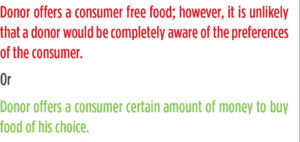 asked my coworkers, family members, and my friends whether they would prefer a gift or a gift card. Gift cards any day ensure the security of the preferences of the receiver. Accordingly, “Gift Card” being everyone’s obvious choice, I remember how puzzled I became when I could not find a clue why would beneficiaries oppose Anganwadi Scheme Benefit Transfer!
asked my coworkers, family members, and my friends whether they would prefer a gift or a gift card. Gift cards any day ensure the security of the preferences of the receiver. Accordingly, “Gift Card” being everyone’s obvious choice, I remember how puzzled I became when I could not find a clue why would beneficiaries oppose Anganwadi Scheme Benefit Transfer!
I was, however, wrong to compare Direct Benefit Transfer for food with Gift Card Economics. I remember my post-graduation period when after a tiresome day at the university I used to come back to my shabby share-house and prepare a meal for dinner (most days a tasteless one, given my weak culinary skill). I longed fo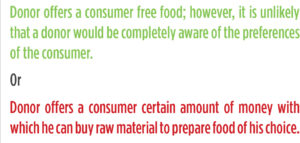 r someone who would cook anything edible for me giving me relief from the kitchen. Someone buying vegetables and rice for me would have been good, but someone offering me cooked meals would have been great. The Central Government’s decision to provide DBT instead of hot meals under Anganwadi Scheme has hit a roadblock in ten pilot districts. Well, it does not surprise me. A child between six months and three years, as well as pregnant and lactating mothers till six months after delivery, are the usual beneficiaries of Anganwadi food scheme. A prepared meal free of cost instead of just raw materials is undeniably much to the relief of a busy mother from her kitchen chores.
r someone who would cook anything edible for me giving me relief from the kitchen. Someone buying vegetables and rice for me would have been good, but someone offering me cooked meals would have been great. The Central Government’s decision to provide DBT instead of hot meals under Anganwadi Scheme has hit a roadblock in ten pilot districts. Well, it does not surprise me. A child between six months and three years, as well as pregnant and lactating mothers till six months after delivery, are the usual beneficiaries of Anganwadi food scheme. A prepared meal free of cost instead of just raw materials is undeniably much to the relief of a busy mother from her kitchen chores.
 Moreover, Anganwadi beneficiaries usually belong to Socio-Economic Class (SEC) C, D, or E. It would be most unwise to compare their needs with the preference for pre-paid gift cards by someone who belongs to SEC A. Dearth of liquid money to buy food is one of the reasons behind the success of Anganwadi food program. DBT of food has served the purpose of outreach of nutrition to all the nooks and corners of the pilot districts but at the cost of delay of reimbursement. After ten months of implementation of DBT for food, the audit in Ranchi has revealed that the money for reimbursement was not being deposited on time and SMS system to inform the beneficiaries was not working effectively.
Moreover, Anganwadi beneficiaries usually belong to Socio-Economic Class (SEC) C, D, or E. It would be most unwise to compare their needs with the preference for pre-paid gift cards by someone who belongs to SEC A. Dearth of liquid money to buy food is one of the reasons behind the success of Anganwadi food program. DBT of food has served the purpose of outreach of nutrition to all the nooks and corners of the pilot districts but at the cost of delay of reimbursement. After ten months of implementation of DBT for food, the audit in Ranchi has revealed that the money for reimbursement was not being deposited on time and SMS system to inform the beneficiaries was not working effectively.
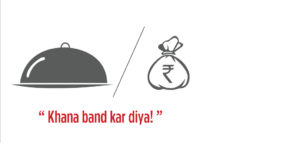 Food served in Anganwadi centers is ample to fill one’s stomach. The government incurs a cost of INR 8 per child daily and INR 9.50 per mother daily. The cost amounts to INR 240 and INR 285 per person per month respectively. Transferred cash feels insignificant when-when we compare it with the volume of food served in Anganwadi centers. “If we introduce a system of cash in lieu of take-home rations, the general message will be of ‘khana band kar diya,’” fears a senior official in the ministry.
Food served in Anganwadi centers is ample to fill one’s stomach. The government incurs a cost of INR 8 per child daily and INR 9.50 per mother daily. The cost amounts to INR 240 and INR 285 per person per month respectively. Transferred cash feels insignificant when-when we compare it with the volume of food served in Anganwadi centers. “If we introduce a system of cash in lieu of take-home rations, the general message will be of ‘khana band kar diya,’” fears a senior official in the ministry.
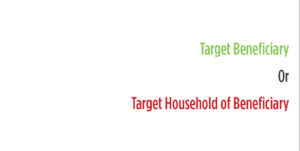 Although DBT aims at better targeting the beneficiaries, in case of food program cash transfer to the account holder will not ensure the intake of proper nutrition by the child and the mother. Nationally, the average household size is 4.9 people per household. Deposition of INR 525 per month for a mother and child pair to the beneficiary’s account would apparently mean an expense of on an average INR 105 per member of the household.
Although DBT aims at better targeting the beneficiaries, in case of food program cash transfer to the account holder will not ensure the intake of proper nutrition by the child and the mother. Nationally, the average household size is 4.9 people per household. Deposition of INR 525 per month for a mother and child pair to the beneficiary’s account would apparently mean an expense of on an average INR 105 per member of the household.
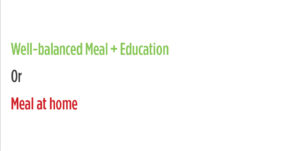 In Anganwadi Centers, children get a well-balanced diet. Provision of subsidized cost of only rice nowhere matches the nutrition level in a meal served in an Anganwadi. In fact, primary education being an added advantage, meals sometimes are the main incentives for the lower SEC parents to send their kids there. DBT of food program is supposed to put Anganwadi’s significance at a low ebb and reduce the number of children learning A-B-C in a regular classroom environment.
In Anganwadi Centers, children get a well-balanced diet. Provision of subsidized cost of only rice nowhere matches the nutrition level in a meal served in an Anganwadi. In fact, primary education being an added advantage, meals sometimes are the main incentives for the lower SEC parents to send their kids there. DBT of food program is supposed to put Anganwadi’s significance at a low ebb and reduce the number of children learning A-B-C in a regular classroom environment.
Cash Transfer for food program wrongly target beneficiaries, adds burden to the recipients and fails to ensure nutrition intake of children and mothers. Earlier, they used to get a prepared meal. Now they need to decide what meal to prepare, prepare the meal and wait for the delayed reimbursement. Anganwadi Scheme Benefit Transfer is likely to run into a hurdle from both a point of view of a beneficiary and operational perspective.










